Sensor Sweep: A. Merritt, Zorro, Indiana Jones Game, Choose Your Own Adventure
Monday , 22, January 2024 Sensor Sweep 1 CommentComic Books (Dark Worlds Quarterly): The blending of genres continues in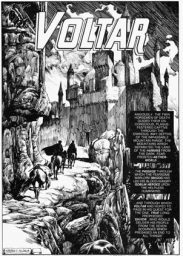 1981, with many stories falling into the Science Fiction category. SF was big in the 1980s and Sword & Sorcery on the wane. We are only one year away from Arnold Schwarzenegger playing Conan. You’d expect an up-surge in interest but in many ways 1982 will be a breaking point for S&S.
1981, with many stories falling into the Science Fiction category. SF was big in the 1980s and Sword & Sorcery on the wane. We are only one year away from Arnold Schwarzenegger playing Conan. You’d expect an up-surge in interest but in many ways 1982 will be a breaking point for S&S.
Weird Tales (Tellers of Weird Tales): From March 1923 to May/June/July 1924, The Rural Publishing Corporation of Chicago and Indianapolis published thirteen issues of its new magazine, Weird Tales. There was one bimonthly issue during that time, July/August 1923, and one month with no issue at all, December 1923. Weird Tales was otherwise a monthly magazine until the thirteenth issue, which did triple duty, covering May through July 1924.
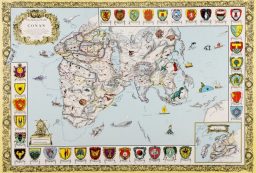 Robert E. Howard (Sprague de Camp Fan): Neither the Gnome Press nor the Lancer/Ace Conan series included this essay by Robert E. Howard. Most likely the manuscript hadn’t been discovered yet. In any event, it was first published in A Gazeteer of the Hyborian World of Conan, Starmont House, 1977.
Robert E. Howard (Sprague de Camp Fan): Neither the Gnome Press nor the Lancer/Ace Conan series included this essay by Robert E. Howard. Most likely the manuscript hadn’t been discovered yet. In any event, it was first published in A Gazeteer of the Hyborian World of Conan, Starmont House, 1977.
Fiction (Ken Lizzi): Manly Wade Wellman was one the last of the pulp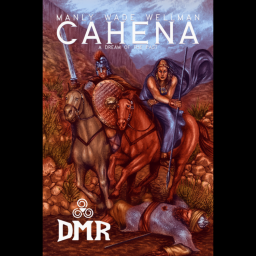 authors. He was perhaps best known for his Silver John stories. I particularly enjoyed his Kardios of Atlantis stories, and I like his paranormal detective character John Thunstone. Cahena is a tonally different work. Ostensibly it is a work of historical fiction. When the first suggestions of the supernatural appeared in the narrative, my first instinct was to compare it to John Myers Myers The Harp and the Blade.
authors. He was perhaps best known for his Silver John stories. I particularly enjoyed his Kardios of Atlantis stories, and I like his paranormal detective character John Thunstone. Cahena is a tonally different work. Ostensibly it is a work of historical fiction. When the first suggestions of the supernatural appeared in the narrative, my first instinct was to compare it to John Myers Myers The Harp and the Blade.
Fantasy/D&D (DMR Books): I took great interest in Gygax’s list, as it included many writers whose works I’d not yet read: John Bellairs, Philip José Farmer, Margaret St. Clair, and Manly Wade Wellman, to name just a few. Also included among the unfamiliar names was Abraham Merritt (or simply A. Merritt, as his name appeared in the appendix). More intriguingly, Gygax included Merritt in a smaller list of writers whose works he considered to have been “the most immediate influences” upon Dungeons & Dragons.
Comic Books (Fandom Pulse): Sean Gordon Murphy’s Zorro: Man of the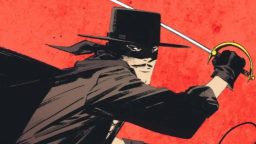 Dead #1 dropped in comic book stores a week ago, giving comic shop readers a look at the book, which backers paid $50 or more to receive several months before they will have their books delivered. The crowdfunding faux pas of putting a retail version on sale before […]
Dead #1 dropped in comic book stores a week ago, giving comic shop readers a look at the book, which backers paid $50 or more to receive several months before they will have their books delivered. The crowdfunding faux pas of putting a retail version on sale before […]
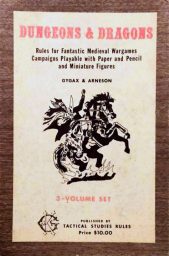 D&D (Grognardia): While it’s still possible to argue in good conscience about the precise origins or start date of the Old School Renaissance, I don’t think there can be any serious debate that the major intellectual impetus behind the early OSR was the reexamination of original (1974) Dungeons & Dragons.
D&D (Grognardia): While it’s still possible to argue in good conscience about the precise origins or start date of the Old School Renaissance, I don’t think there can be any serious debate that the major intellectual impetus behind the early OSR was the reexamination of original (1974) Dungeons & Dragons.
Appendix N (Goodman Games): Of all the literary influences on D&D and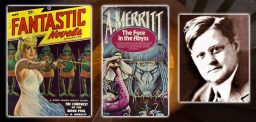 DCC RPG, Abraham Merritt is perhaps the “most-influential of the least-known.” His work is rarely read in this modern time, yet he is named by Gary Gygax as one of “the most immediate influences on AD&D. Today, on January 20, 2020, the 136th anniversary of his birth, we provide a little more insight into this little-read but well-deserving author. You can also learn about all the Appendix N authors by listening to the Appendix N Book Club. For Merritt in particular, his most famous work, The Moon Pool, was recently covered in a special session on the Appendix N Podcast in which Joseph Goodman participated.
DCC RPG, Abraham Merritt is perhaps the “most-influential of the least-known.” His work is rarely read in this modern time, yet he is named by Gary Gygax as one of “the most immediate influences on AD&D. Today, on January 20, 2020, the 136th anniversary of his birth, we provide a little more insight into this little-read but well-deserving author. You can also learn about all the Appendix N authors by listening to the Appendix N Book Club. For Merritt in particular, his most famous work, The Moon Pool, was recently covered in a special session on the Appendix N Podcast in which Joseph Goodman participated.
Sword & Sorcery (Echoes of Crom Records): I talk about the connection between heavy metal music and sword-and-sorcery fiction.
Poe (Adventures Fantastic): Edgar Allan Poe (1809-1849) was born on this date, January 19. He was one of the greatest writers of the strange and macabre. Depending on how you split hairs when defining your terms, he has been credited with creating the detective story and science fiction. And while some might say that’s a stretch, there’s no denying that he was an early practitioner of those genres as well as a writer of some truly gothic tales. H. P. Lovecraft, himself no slouch in the weird fiction department, was greatly influenced by him.
Art (Art of the Movies): When cameras rolled in Vienna for the location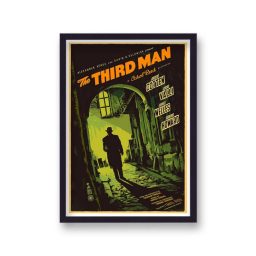 shoot of The Third Man, director Carol Reed wasn’t even sure if hi villain was going to show up. Mirroring the plot of the fatalistic British noir masterpiece, he and producer Alexander Korda had themselves pursuing Orson Welles across Europe to get his signature for the part of Harry Lime, amoral but charismatic racketeer at the hear of Graham Greene’s screenplay.
shoot of The Third Man, director Carol Reed wasn’t even sure if hi villain was going to show up. Mirroring the plot of the fatalistic British noir masterpiece, he and producer Alexander Korda had themselves pursuing Orson Welles across Europe to get his signature for the part of Harry Lime, amoral but charismatic racketeer at the hear of Graham Greene’s screenplay.
Conventions (Karl Edward Wagner Day): On October 14, 1994, the late 20th century’s premier author of both Sword & Sorcery and horror; editor of Carcosa Press, Conan, and the Year’s Best Horror Stories series; and native son of Knoxvile, Karl Edward Wagner passed away. In honor of his 30th anniversary since passing, come join your fellow KEW fans for this one-day event to commemorate his legacy. All are invited to attend, though seating is limited to 48. Cost is $20 per person.
Art (Rip Jagger’s Dojo): This is a very sexy 1973 Frazetta cover for National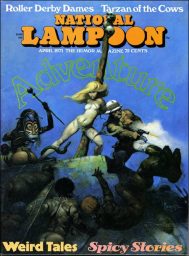 Lampoon. What’s not to like about the Goblin Queen.
Lampoon. What’s not to like about the Goblin Queen.
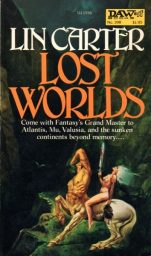 Authors (DMR Books): Of those, one title jumped out at me: Lost Worlds, by Carter. Intrigued, I pulled it out and examined it. The title made me think of dinosaurs, which, as children my age were obligated to be, I was wild about. I had discovered the works of Edgar Rice Burroughs through a mention in a non-fiction book on dinosaurs and was eagerly searching out what our library had by him. I pulled it out and saw the cover.
Authors (DMR Books): Of those, one title jumped out at me: Lost Worlds, by Carter. Intrigued, I pulled it out and examined it. The title made me think of dinosaurs, which, as children my age were obligated to be, I was wild about. I had discovered the works of Edgar Rice Burroughs through a mention in a non-fiction book on dinosaurs and was eagerly searching out what our library had by him. I pulled it out and saw the cover.
Pulp (Dark Worlds Quarterly): 1928 and 1929 show a real improvement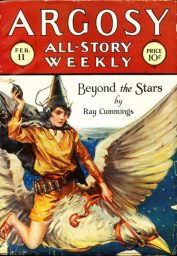 over the previous years for serials. This is largely in part to Ray Cummings providing several. Erle Stanley Gardner, best known for his Perry Mason novels, gives us four Science Fiction/Fantasy stories. Many do not know that ESG wrote countless short stories and novellas, even after the success of Perry Mason. We also see the first of Robert A. Graef’s distinctive covers. The combination is the beginning of a Fantasy high period that will run into the next decade. On the negative side, not much from Edgar Rice Burroughs, only one Western.
over the previous years for serials. This is largely in part to Ray Cummings providing several. Erle Stanley Gardner, best known for his Perry Mason novels, gives us four Science Fiction/Fantasy stories. Many do not know that ESG wrote countless short stories and novellas, even after the success of Perry Mason. We also see the first of Robert A. Graef’s distinctive covers. The combination is the beginning of a Fantasy high period that will run into the next decade. On the negative side, not much from Edgar Rice Burroughs, only one Western.
 RPG (Fatherly): We’re talking about Choose Your Own Adventure, of course. The first published installment arrived in 1979, with The Cave of Time — though as we’ll see that wasn’t really the first book. For decades, Choose Your Own Adventure was an atypical experiment in literary determinism that resulted in one of the most-read book franchises ever created.
RPG (Fatherly): We’re talking about Choose Your Own Adventure, of course. The first published installment arrived in 1979, with The Cave of Time — though as we’ll see that wasn’t really the first book. For decades, Choose Your Own Adventure was an atypical experiment in literary determinism that resulted in one of the most-read book franchises ever created.
Games (Sidestrollers): Razorfist & Stuttering Craig on the New Indiana Jones Video Game.
Games (Wasteland & Sky): Though video games have been decried for many years as frivolous and useless (as every medium has at one point by the people who provably cannot preserve culture at all), there is a very real formula and meticulous design process that comes from them. Despite current trends, there was a lot more to video games that poorly written Z-movies that contain a few button presses to make scripts happen. In fact, when the industry ran on arcade design was when it reached its peak.
Tolkien (Notion Club Papers): From Beowulf and the Critics by JRR Tolkien, edited by Michael DC Drout, 2002. [Drout:] Tolkien located civilization in the masculine institutions of the Beowulf poet (in particular the bright hall), outside of which the chaos-monsters ruled. The primary theme of Beowulf, Tolkien wrote, is “that man, each man and all men and all their works shall die.”
D&D (Sacnoth’s Scriptorium): VINYL: D&D So, here’s something I’ve had for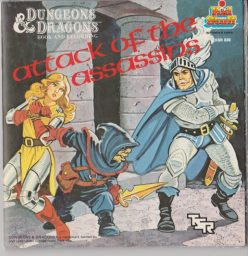 years and never taken a good look at, much less given it a listen. A decade and more before the audio-cd adventures, some of which I worked on (edited Tim Beach’s HAIL THE HEROES and wrote the cd script for Jeff Grubb’s MARK OF AMBER), TSR had tried something else along the same lines, albeit less ambitious. This had taken the form of a read-along book with accompanying record (a .45 rpm in size but .33/3 in speed).
years and never taken a good look at, much less given it a listen. A decade and more before the audio-cd adventures, some of which I worked on (edited Tim Beach’s HAIL THE HEROES and wrote the cd script for Jeff Grubb’s MARK OF AMBER), TSR had tried something else along the same lines, albeit less ambitious. This had taken the form of a read-along book with accompanying record (a .45 rpm in size but .33/3 in speed).
Science Fiction (Wert Zone): After a lengthy break (six years since the last version), the (non-) patented, utterly non-definitive Wertzone Official SFF All-Time Bestseller List returns. There have been some changes this time. The last list was getting on for 300 entries strong, and unreliable and variable reporting meant the lower half of the list had more holes in it than Swiss cheese after being visited by lactose-loving moths, due to patchy reporting.
Tolkien (John Garth): Goblin caves at the North Pole! The Father Christmas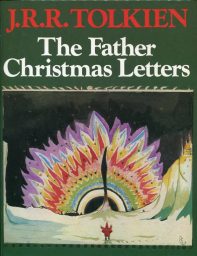 letters penned by Tolkien tell us some surprising things about the Arctic. They borrow penguins from Antarctica and feature a polar bear who can speak, write and draw. The North Pole is an actual pole and there’s no sign whatsoever of an ocean under all that ice.
letters penned by Tolkien tell us some surprising things about the Arctic. They borrow penguins from Antarctica and feature a polar bear who can speak, write and draw. The North Pole is an actual pole and there’s no sign whatsoever of an ocean under all that ice.
RPG (Grumpy Wizard): Jennell Jaquays, one of the great designers and artists of tabletop role-playing games, died yesterday, January 10, 2024. The early days of Original Dungeons & Dragons is the era of the hobby I find most fascinating. Many of the most important game designers in both tabletop role-playing games and video games got their start in this period.
Hunting (Frontier Partisans): The Long Hunters are a foundation stone of Frontier Partisans history — the men who penetrated west of the Appalachian chain mostly in search of prodigious quantities of deerskins for the European trade. They found the routes west, spied out the land and acted as the spearpoint of America’s first major push westward. I can’t think of better company out in the weather getting the work done.
Outdoors (Townsends): Dan Wowak and Jon Townsend share skills that are crucial for surviving on the American frontier. A compilation of our collaboration videos with Coalcracker Bushcraft.
History (MSN): In 1643, after one of the worst outbreaks of sectarian violence in early modern Ireland, a landowner turned up at a government inquiry with an inventory of his losses. John Fortune complained that Catholic rebels had plundered his recently established farmstead. He had been robbed of cattle, sheep and household goods to the value of £30.
That SFF all-time bestseller list is great data!